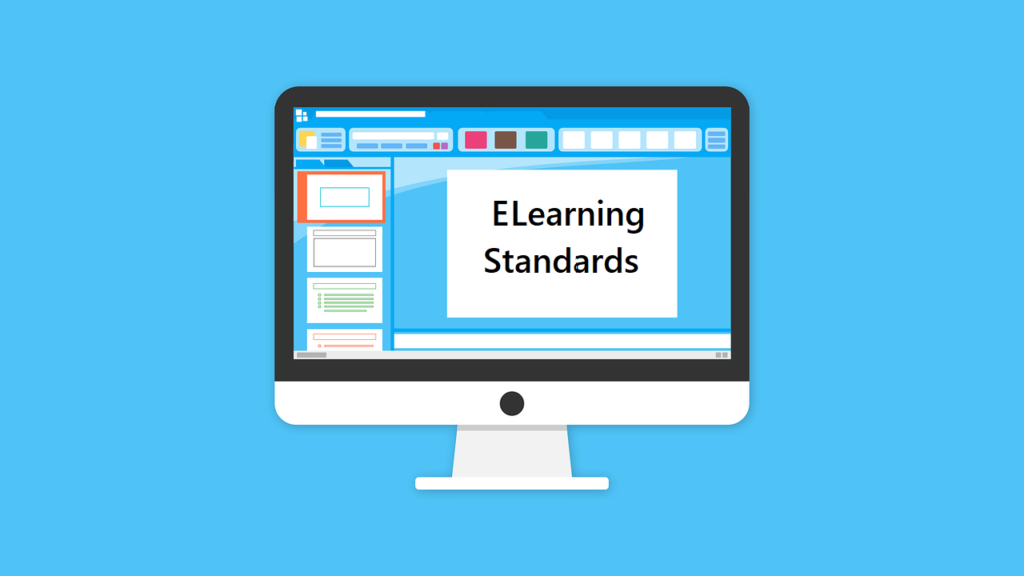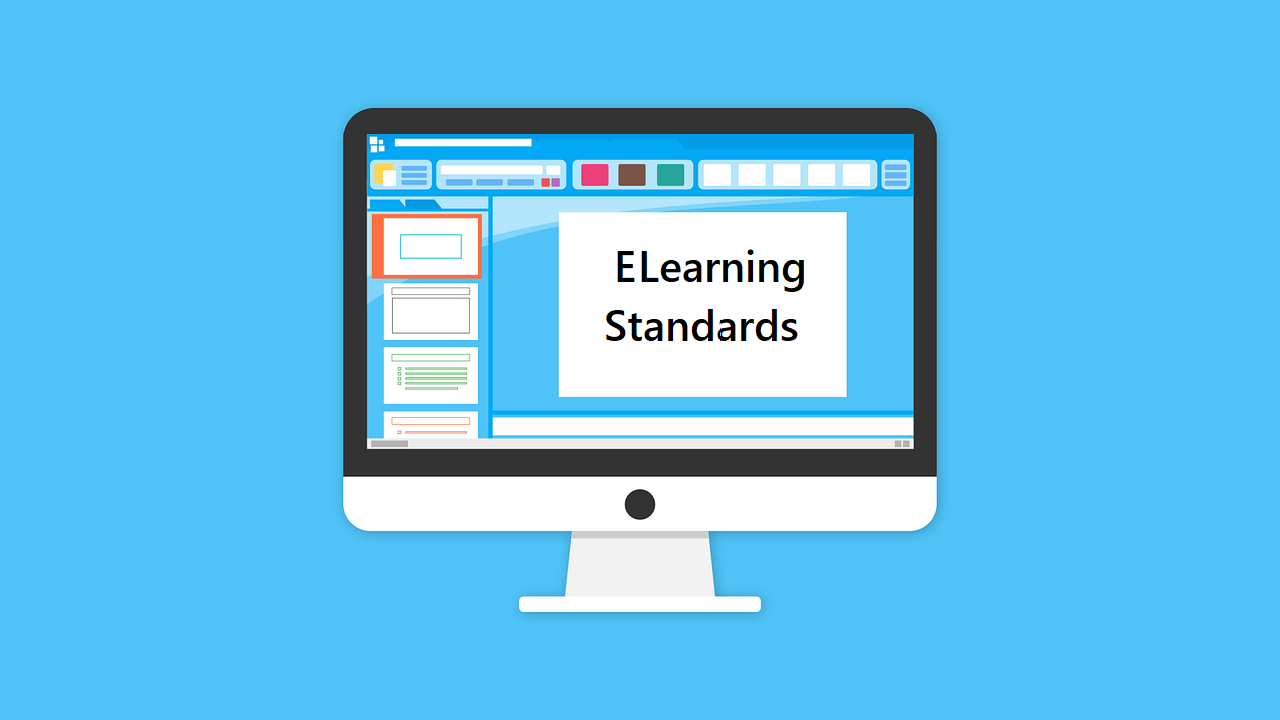The 4 Hottest ELearning Standards For Your E-Learning Business In 2020
- September 25 2020
- Vaishak
This post talks about the 4 popular elearning standards and also compares the best among them for creating your interactive courses.

The classic definition of Standards is: ‘a repeatable, agreed and documented way of doing something’.
You can find standards implemented everywhere, right from the food you eat to the batteries you use to power your appliances.
Let us understand eLearning standards with an example.
Remember the time when you had CDs at home?
The CD’s played fine in all CD players irrespective of whether it was a Samsung or Onida make.
This feature of interoperability became possible only because CD manufacturers adhered to a set of standards.
Likewise, a simple set of standards has been driving the e-learning industry forward.
In this post, we are going to dive deep and understand the popular e-learning standards available. We will also find out which amongst them are the best.
eLearning standards: Why were they developed?
eLearning standards are a set of rules that makes your eLearning products like courses, mock-tests, or bundles compatible across all platforms.
In essence, eLearning standards allow you to reuse your products across all LMS’s or course authoring tools.
But, this was not the case in the ’80s. Back then, companies & trainers had to recreate their courses from scratch, every time they choose a new platform.
To save this severe wastage of time, eLearning experts gathered together to create the so-called eLearning standards.
If you are not familiar with the terms like LMS or authoring tools, read below:
- LMS: A software that distributes your course to learners & tracks their progress
- Course Authoring Tools: Software to create interactive graphic/visual courses
What are the popular eLearning standards?
There are several eLearning standards available today. But, for this blog, I will talk about the 4 popular eLearning standards used across the globe –
AICC
It all started in 1988 when several aircraft manufacturers(Airbus, Boeing, McDonnel Douglas) wanted to implement Computer Based Training (CBT) to its employees.
They wanted a standard that allowed them to reuse their CBT courses across their systems.
Thus they formed a committee, developed standards for eLearning, and named it AICC: Aviation Industry CBT (Computer Based Training) Committee.
Their guidelines (aka Computer Managed Instructions or CMI) allowed them to provide common course content for all the learners through an LMS.
With better standards coming up, AICC finally dissolved itself to the Department of Defence’s (DOD) ADL (Advanced Distributed Learning) group in 2014.
SCORM
In 1998, President Bill Clinton and the US department of defense’s (DOD) ADL (Advanced Distributed Learning) group developed SCORM by borrowing specs from the AICC.
The Sharable Content Object Reference Model (SCORM) tracked learner data & also made online courses cost-effective.
SCORM 1.1 was released first, followed by SCORM 1.2 in the same year of 2001.
Over the years, SCORM evolved and the most recent release is called SCORM 2004 4th edition released in 2009.
Though SCORM became one of the most popular eLearning standards, it had one major drawback.
Users needed to login to an LMS from a laptop/desktop environment to record learning information.
So, in an age where mobile phone users were dominating, SCORM simply couldn’t track the mobile learner’s progress.
ADL finally succeeded to build a new world-class eLearning standard called Tin Can API.
Related Article: SCORM MEANING EXPLAINED
Tin Can API
SCORM’s failure called for improvement and thus TINCAN was born in 2013. It was renamed to xAPI or Experience API.
While SCORM tracks only the student data, Tincan records contexts like when the learner did an activity, from which device, minutes of learning, and so on.
It could also record all minute learning experiences of a student from any device. In short, the world saw for the first time a device-independent eLearning standard.
Tincan would store the student information into its Learning Record Store (LRS) that captures the learner experience securely from anywhere on the internet.
For example: for a learner Rahul, it will store learner experience as statements into the LRS as below:
- Rahul completed Lesson 1 of Thermodynamics
- Rahul scored 60% in Lesson 1, Section Quiz of Thermodynamics
TinCan could capture this data whether Rahul attends the course from mobile or desktop.
Now, even if Rahul isn’t connected to the internet, TinCan can fetch his learner data from his phone or desktop as soon as he comes online
cmi5
Back in 2014, when the AICC was dissolved, several experts wanted to develop a partner standard for Tin Can make it simpler for traditional LMSs to deliver courses.
This led to the birth of cmi5 in 2016 which comprises a standard set of Tin Can statements.
Cmi5 also defines the file structure of the LMS and defines the communication of the course with the LMS.
IMS Common Cartridge – a special mention
This standard has not gained as much popularity as the rest of the eLearning standards, but it still deserves a special mention as it is a rapidly growing eLearning standard.
It was created by IMS Global Learning Consortium, a popular non-profit organization founded way back in 1997.
This organization built this standard which they named as IMS Common Cartridge to facilitate interoperability in an educational ecosystem.
Unlike SCORM, this standard focuses more on assessments and hence is ideal if you are in the higher education business.
Many claim this as the simplified version of SCORM and it is quite easy to convert SCORM content to IMS Common Cartridge.
Thanks to IMS Global, this standard is evolving every day and the time is not very far when it will completely replace SCORM and Tin Can.
Should You Create A Course Using These Standards
If you are in the corporate training space, you need to create awesome interactive courses.
Such courses will be like playing a game or story with interactive buttons and texts.
But the downside is that it could cost you anywhere from $1400 per user.
However, if you are in a place where you don’t need to track learner interactions, you can opt for simple courses like video, pdf, ppt, or live classes.
To know the pros and cons of choosing a standard, read the link highlighted.
Comparative study of the 4 popular eLearning standards
Here is a table comparing the top 4 popular eLearning standards of the world.

From the table, it is quite clear that the lack of any negatives in Tin Can and cmi5 makes them the best eLearning standards to conform to.
On the flip side, SCORM is the most popular eLearning standard in the world currently and several LMSs support it.
So the key takeaway is to choose an LMS that supports all these eLearning standards to have the best experience in course creation and transfer.
How does Learnyst help you to use these standards?
Learnyst supports all these popular standards giving you the flexibility to create and transfer courses effortlessly.
Take the case of Raghu, a customer of Learnyst, who is also a teacher running a successful online training institute for college students.
Raghu was using a different LMS in the past and had uploaded several SCORM & TINCAN courses. These courses were huge and had millions of content pieces.
Last year, his previous LMS had hiked their yearly subscription fee making it unaffordable to him.
That’s when he came across Learnyst, an affordable LMS that understands the needs of teachers like him.
However, he still had to address the elephant in the room – how to transfer all the courses from his old LMS to Learnyst.
Since Learnyst supported all the major eLearning standards, he could effortlessly transfer the courses to it as his older LMS supported one of these standards.
So, what are the next steps?
At Learnyst, we help you with the entire process of course creation to marketing, creating your own branded online academy.
If you already have course content ready, signup with us and get your online academy free trial.
You can create your own branded online academy, upload, sell, and get 100% course sales credited to your bank account during this free trial period.
So, go ahead. Create and Sell Courses online and make 10X revenue within months.


Leave your thought here